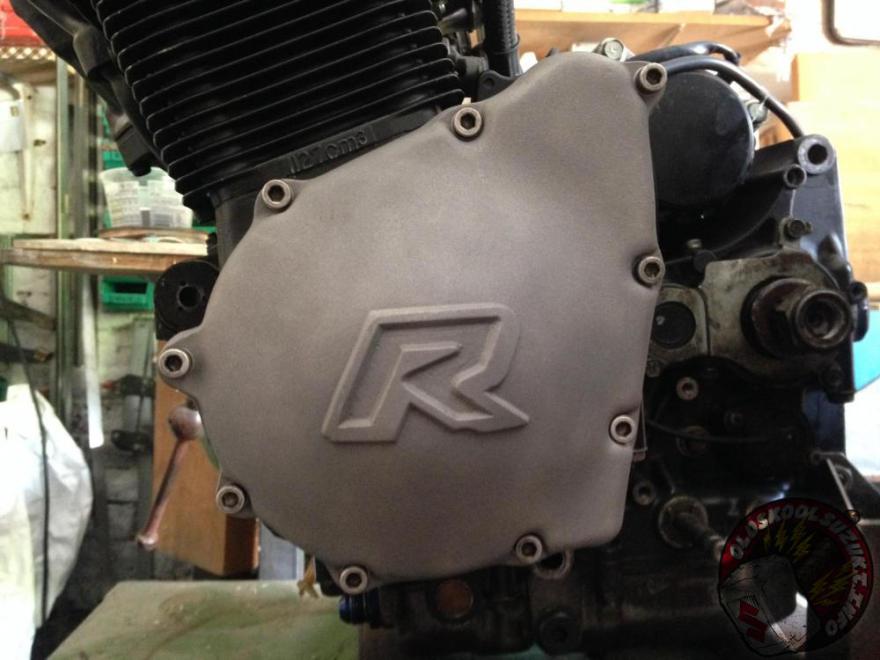Mcmental ( Chris McNicoll) is a long time member of OSS and he has been ultrasonically cleaning carbs, looms and other engine components for nearly 5 years
Chris operates a 22 litre tank ) and uses an expensive, quality American designed fluid that is used worldwide in the aviation industry. To give you an idea of what size the tank is, Chris can fit a full GSXR head in the tank as per the photo.
For a completeGSXR head OSS members will benefit from the bargain price of £45 , including return postage.
For a bank of 4 carbs, Chris will strip,clean,rebuild,set float heights for just £45 and that includes insured (£200) return postage. If while stripping and cleaning he finds anything that is worn and needs to be replaced e.g. gaskets, o rings etc, he will source replacements at cost and fit them free of charge.
Chris can also clean your complete wiring loom, stripping off all the old sticky black tape and replacing with nice new non sticky loom cloth tape this costs £25 inc return postage.
If you are interested in using the service you can PM Chris through his Mcmental trader profile in our
trader section. Chris has kindly offered a free loom clean worth £25 to the winner of our OSS member competition. Find out more
here.
About Ultrasonic Cleaning
Ultrasonic cleaning is a process that uses ultrasound (usually from 20–400 kHz) and an appropriate cleaning solvent (sometimes ordinary tap water) to clean items. The ultrasound can be used with just water, but use of a solvent appropriate for the item to be cleaned along with the soiling enhances the effect. Cleaning normally lasts between three and six minutes, but can also exceed 20 minutes, depending on the object to be cleaned.Ultrasonic cleaners are used to clean many different types of objects, including jewellery, lenses and other optical parts, watches, dental and surgical instruments, tools, coins, fountain pens, golf clubs, fishing reels, window blinds, firearms, musical instruments, industrial parts and electronic equipment. They are used in many jewellery workshops, watchmakers’ establishments, and electronic repair workshops.Ultrasonic cleaning uses cavitation bubbles induced by high frequency pressure (sound) waves to agitate a liquid. The agitation produces high forces on contaminants adhering to substrates like metals, plastics, glass, rubber, and ceramics. This action also penetrates blind holes, cracks, and recesses. The intention is to thoroughly remove all traces of contamination tightly adhering or embedded onto solid surfaces. Water or other solvents can be used, depending on the type of contamination and the workpiece. Contaminants can include dust, dirt, oil, pigments, rust, grease, algae, fungus, bacteria, lime scale, polishing compounds, flux agents, fingerprints, soot wax and mold release agents, biological soil like blood, and so on. Ultrasonic cleaning can be used for a wide range of workpiece shapes, sizes and materials, and may not require the part to be disassembled prior to cleaning.[4] Objects must not be allowed to rest on the bottom of the device during the cleaning process, because that will prevent cavitation from taking place on the part of the object not in contact with solvent
































